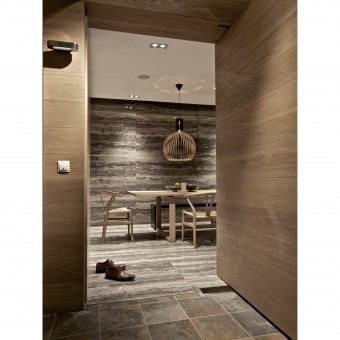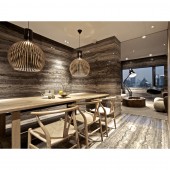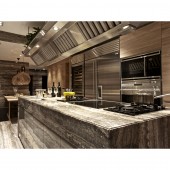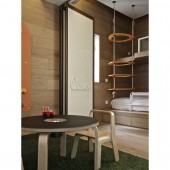DESIGN NAME:
Chan's Residence
PRIMARY FUNCTION:
Residential Apartment
INSPIRATION:
Each space is delineated by sliding doors or partition walls which can open or close depending on the client’s needs. In the children’s area for example, the children’s sleeping quarters are created by sliding partition walls which by day opens into the playroom to become one large activity space. The children area then opens further into the couple’s study allowing the couple to work at their desk whilst keeping an eye on the children. This concept is also repeated in the living/balcony area as alluded to above.
UNIQUE PROPERTIES / PROJECT DESCRIPTION:
The client is a family of 4, comprising the couple and their 2 children, aged 4 ad 2 years respectively. The warm and welcoming ambience of the apartment is created via the use of natural material such as Italian travertine marble and raw oak. These, coupled with a careful selection of eclectic Scandinavian furnishing create the overall effect of a luxurious, yet comfortable family home.
To further emphasis the designated children area, rock climbing walls, rope ladders and chalk board table are added as features.
OPERATION / FLOW / INTERACTION:
-
PROJECT DURATION AND LOCATION:
-
FITS BEST INTO CATEGORY:
Interior Space and Exhibition Design
|
PRODUCTION / REALIZATION TECHNOLOGY:
-
SPECIFICATIONS / TECHNICAL PROPERTIES:
-
TAGS:
-
RESEARCH ABSTRACT:
-
CHALLENGE:
The client’s brief was an apartment which could work well as an open family home yet allow the couple to entertain and gather large groups of family and friends without disturbing their young children. This has been achieved via the use of multiple sliding doors and partition walls which clearly delineates the “public” living/dining areas and the family’s private living quarters. The sliding doors which completely opens up the living area to the large balcony, replete with working fireplace, further breaks down traditional ideas of what is inside and what is outside space.
ADDED DATE:
2013-01-30 19:11:31
TEAM MEMBERS (1) :
IMAGE CREDITS:
Chris Kwong, 2012.
|









